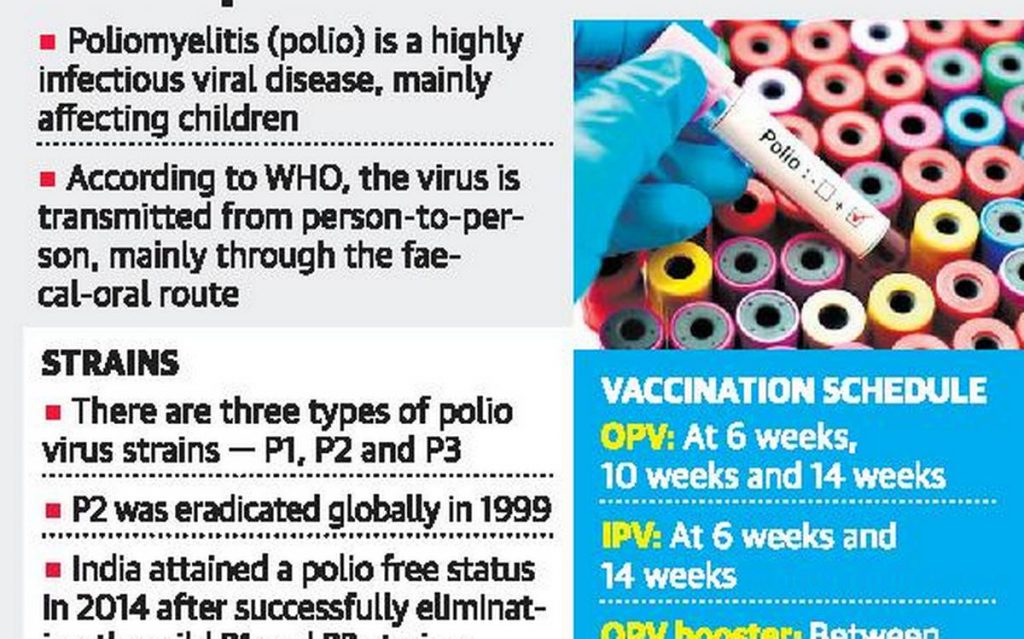Contents
- Wildlife Crime Control Bureau (WCCB)
- Pulse Polio Programme for 2021
WILDLIFE CRIME CONTROL BUREAU
Focus: GS 3;Conservation, environmental pollution and degradation, environmental impact assessment.
Why in News?
Wildlife Crime Control Bureau Busts Wildlife Trafficking Syndicates in Jammu & Kashmir; Huge quantity of Wildlife contrabands seized.Union Environment Minister applauds the agencies on one of the largest seizures in the recent past
About Wildlife Crime Control Bureau (WCCB)
- It is a statutory multi-disciplinary body, established by the Government of India under the Ministry of Environment and Forests, to combat organized wildlife crime in the country.
- The Bureau has its headquarters in New Delhi.
- Under Section 38 (Z) of the Wild Life (Protection) Act, 1972, it is mandated to as follows;-
- collect and collate intelligence related to organized wildlife crime activities and disseminate the same to the State and other enforcement agencies for immediate action so as to apprehend the criminals.
- establish a centralized wildlife crime data bank.
- assist foreign authorities and international organizations concerned to facilitate coordination and universal action for wildlife crime control.
- build the capacity of the wildlife crime enforcement agencies for a scientific and professional investigation into wildlife crimes.
- assist State Governments to ensure success in prosecutions related to wildlife crimes.
- advise the Government of India on issues relating to wildlife crimes having national and international ramifications, relevant policy, and laws.
- It also assists and advises the customs authorities in inspection of the consignments of flora & fauna as per the provisions of the Wild Life Protection Act, Convention on International Trade in Endangered Species of Wild Fauna and Flora (CITES) and Export Import (EXIM) Policy governing such an item.
- WCCB is also partnering with United Nations University and CIESIN-Earth Institute at Columbia University through the Wildlife Enforcement Monitoring System Initiative.

PULSE POLIO PROGRAMME FOR 2021
Focus: GS 2;Issues relating to development and management of Social Sector/Services relating to Health, Education, Human Resources.
Why in News?
President of India launches countrywide Pulse Polio Programme for 2021.More than 17 Crore Children will be given Polio Drops during “Polio Ravivar” tomorrow
About Pulse Polio Programme for 2021
- Pulse Polio is an immunization campaign established by the government of India to eliminate poliomyelitis (polio) in India by vaccinating all children under the age of five years against the polio virus.
- The project fights polio through a large-scale, pulse vaccination programme and monitoring for poliomyelitis cases.
- India committed to resolution passed by World Health Assembly for global polio eradication in 1988.
- National Immunization Day (NID) commonly known as Pulse Polio Immunization programme was launched in India in 1995, and is conducted twice in early part of each year.
- The Ministry of Health in consultation with the office of President of India has decided to reschedule the Polio Vaccination Day or National Immunization Day or Polio Ravivar to 31st January.
- Children in the age group of 0-5 years are administered polio drops during national and sub-national immunization rounds (in high-risk areas) every year.
About Polio
- Polio is a crippling and potentially fatal viral infectious disease.
- There is no cure, but can be prevented through immunization.
- The strategy to eradicate polio is therefore based on preventing infection by immunizing every child until transmission stops.
- There are two types of vaccines to prevent infection.
- OPV (Oral Polio Vaccine): It is given orally as a birth dose for institutional deliveries, then primary three doses at 6, 10 & 14 weeks and one booster dose at 16-24 months of age.
- Injectable Polio Vaccine (IPV): It is introduced as an additional dose along with the 3rd dose of DPT under the universal immunization programme (UIP).
- India received polio-free certification by the World Health Organization (WHO) in 2014.
- Eradication of a disease refers to the complete and permanent worldwide reduction to zero new cases of an infectious disease through deliberate efforts. If a disease has been eradicated, no further control measures are required. For eg- smallpox has been eradicated.
- However, elimination of a disease refers to reduction to zero (or a very low defined target rate) of new cases of an infectious disease in a defined geographical area. Elimination requires continued measures to prevent re-establishment of disease transmission.
- Yaws and Leprosy have been eliminated from India.
- WPV2 and WPV3 have been eradicated globally but WPV1 remains in circulation in just two countries namely, Afghanistan and Pakistan.




